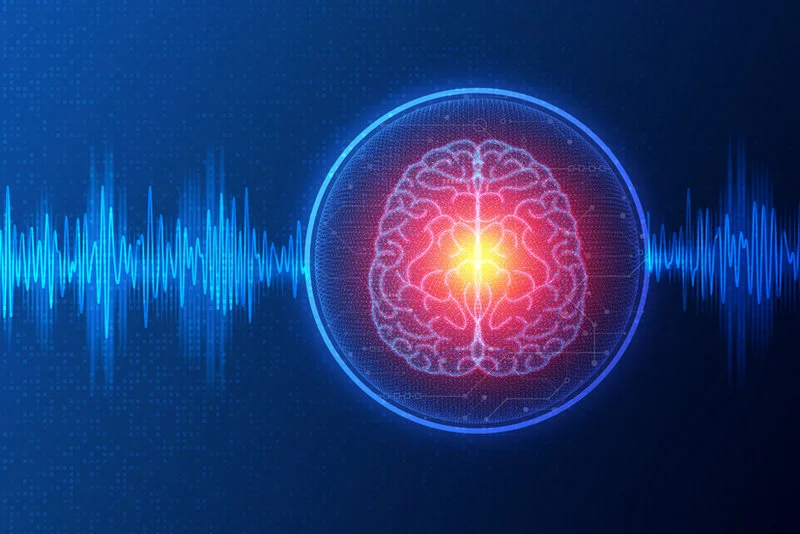This article will explore TMS therapy for fibromyalgia, reviewing how TMS can offer relief from chronic pain associated with fibromyalgia and subsequently improve quality of life. It will explore and provide a better understanding of the methods TMS uses to treat fibromyalgia.
Introduction
With few therapies available to successfully treat fibromyalgia, TMS therapy for fibromyalgia is emerging as a potential. TMS has been used for nearly fifteen years as a form of treatment for several conditions, including TMS fibromyalgia. However, studies were limited until around ten years later.
Newer studies since that time have found several benefits, limited side effects, if any, and the potential for long-term maintenance of fibromyalgia symptoms. But what is TMS therapy for fibromyalgia, and how does it work?

How TMS therapy works
-Unraveling the Science of TMS for Fibromyalgia
Fibromyalgia can be difficult to treat because of unknown causes. There might be several areas of the brain that are not functioning as they should, leading to chronic pain symptoms that are difficult to treat and manage using other methods.
The science of TMS uses deep magnetic stimulation of the brain in order to target the areas that contribute to these symptoms and help them resume normal functioning.
-Potential Benefits and Outcomes
Decades of research have now contributed to an overall understanding of the potential benefits and outcomes of TMS for fibromyalgia. TMS therapy can be applied to several conditions, including fibromyalgia, where it offers a chance to magnetically stimulate deeper regions of the brain that may not receive adequate blood flow or may struggle with things like inflammation. These targeted efforts over the span of several months or even years can help improve multiple areas of the brain that may contribute to the symptoms of fibromyalgia.
In 2015, researchers conducted a meta-analysis where they analyzed hundreds of patient records, TMS and fibromyalgia trials, and other research to determine the efficacy. Results indicate that pain severity does decrease during TMS for fibromyalgia. However, that same study also found that TMS was not a long-term solution as it did not cure fibromyalgia, but it allowed patients to receive relief from chronic pain during their treatment and for a short while after their final treatment session.

-Comparing TMS with Other Treatments
Outside of TMS, potential therapies to treat fibromyalgia are limited to things such as pain medication, particularly opioids for chronic pain, which can lead to severe side effects, not least of which is potential addiction. Moreover, as an individual develops tolerance, those same medications are no longer as effective, which means they are best when used as a short-term treatment, not a long-term treatment.
By comparison, the limited side effects and ongoing efficacy of TMS for fibromyalgia, no matter how many rounds of treatment have been given, indicate that it is a much more viable long-term solution.
Long-term maintenance of TMS and fibromyalgia was reviewed a few years prior, consisting of 14 sessions measuring the amount of pain over the subsequent 24 hours and the amount of pain over several months during which time sessions were received. That same study reviewed other parameters, including mood and anxiety as well as quality of life. The findings confirmed the following:
- TMS therapy for fibromyalgia significantly reduced pain intensity over the span of 25 weeks
- Quality of life was improved concurrently, including fatigue, tiredness in the morning, general activity throughout the day, and sleep.
One study found that after screening 136 articles and five articles with high-quality results, there was a statistically significant reduction in pain intensity for clients who used TMS therapy for fibromyalgia. Another found that TMS to the left dorsolateral prefrontal cortex helped improve fibromyalgia symptoms but not depression and anxiety.
Such studies are important because they reveal the effectiveness of TMS but also indicate that TMS and fibromyalgia may not be the only solution possible and, in fact, are better suited when combined with other treatments like therapy for secondary mood symptoms of depression or anxiety.
-Side effects from TMS therapy
Similar work reviewing nine studies of TMS therapy for fibromyalgia confirmed that participants had a significant decrease in pain across every study and had significantly fewer side effects compared to traditional Pharmaceutical treatments. Side effects were mild, including mild headaches and scalp discomfort at the site of treatment. These findings confirm that TMS therapy works well for fibromyalgia, not just in terms of reducing pain but in terms of reducing negative side effects and improving quality of life.
-TMS Procedure for Fibromyalgia
The procedure for TMS and fibromyalgia is relatively simple and pain-free.:
- First, you go to a qualified treatment center, where you will be placed in a comfortable chair.
- After that, electrodes are placed on your head, or a helmet is placed over your head, depending on the equipment used by the facility.
- A professional monitors the strength and location of the magnetic impulses that are directed into the deep tissue of your brain. The procedure only lasts around 20 minutes, and you don’t have to be put under for it, so you can easily walk in and out, going back to your daily life. There are mild side effects at best, usually something like discomfort at the site of the electrodes or a mild headache when the procedure first begins.

How TMS therapy works for fibromyalgia
So how does TMS and fibromyalgia work?
-Neural Stimulation
Firstly, TMS therapy for fibromyalgia provides neural stimulation. As many of the symptoms related to fibromyalgia originate in the brain, this type of neural stimulation offers a treatment that focuses on the area responsible for the symptoms rather than a prescription opioid that simply cuts off the pain receptors.
-Targeted Brain Regions
Secondly, TMS has the ability to target specific brain regions. This means things like the left dorsolateral prefrontal cortex can be targeted without affecting other areas of the brain, and this can help provide stimulation to regions known to contribute the most to an individual set of symptoms.
-Neuroplasticity Effects
The brain and all of the connections within it have the ability to constantly change and grow. This is referred to as neuroplasticity. With neuroplasticity, long-term chronic pain issues like fibromyalgia can be better treated through things like TMS because TMS can retrain the brain to grow areas that might be smaller than necessary or encourage the growth of things like blood vessels to certain areas of the brain, which can improve blood flow and decrease things like inflammation.
-Reduction of Inflammation
TMS therapy for fibromyalgia also reduces inflammation. This can be a significant factor in contributing to chronic pain, one that over-the-counter medications and even prescription medications may not be equipped to handle in chronic pain situations.
Summing Up
Overall, there are several benefits to using TMS for fibromyalgia. You should consult medical professionals for personalized advice on whether TMS can help you manage your symptoms and be a significant part of your overall treatment plan.
